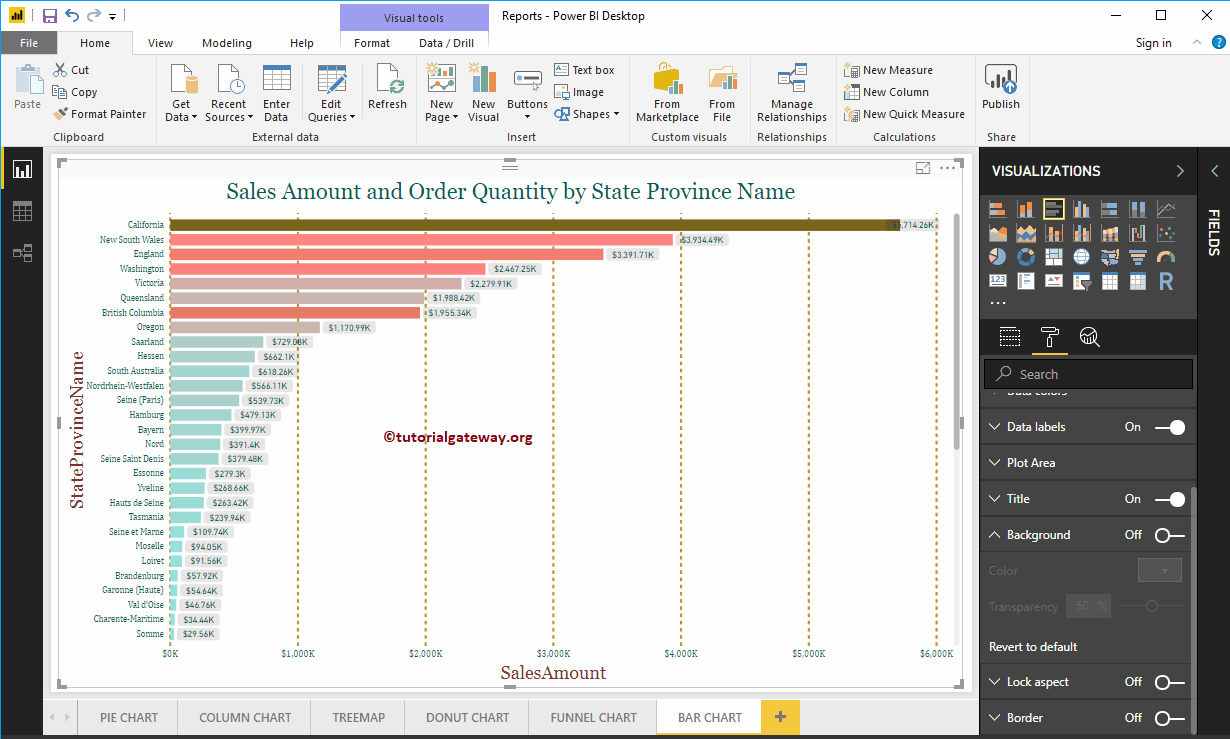Power BI Clustered Bar Chart is used to display horizontal bars of multiple data regions (Measures) against a single Metric. Let me show you how to Create Clustered Bar Chart in Power BI with example.
For this Power BI Clustered Bar Chart demonstration, we use the SQL Data Source that we created in our previous article. So, Please refer to Connect Power BI to SQL Server article to understand the Data Source in Power BI.
How to Create a Clustered Bar Chart in Power BI
First, click on the Clustered Bar Chart under the Visualization section. It automatically creates a Clustered Bar Chart with dummy data.
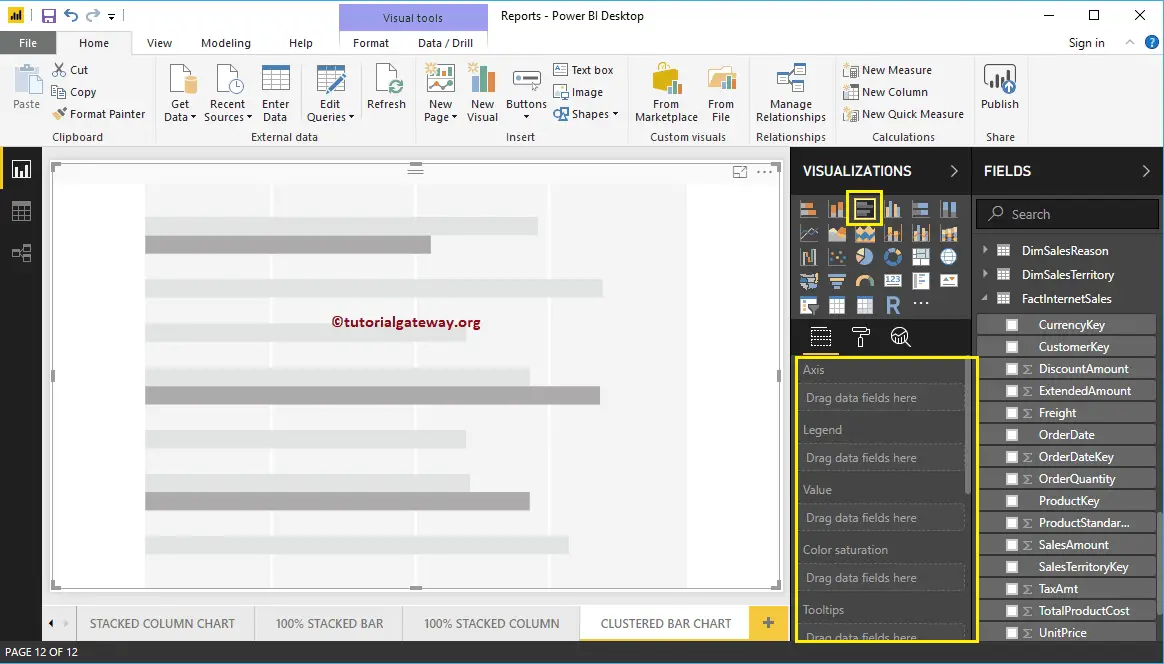
To add data to the Clustered Bar Chart, we have to add the required fields:
- Axis: Please specify the Main Column that represents the Horizontal Axis.
- Legend: Specify the second Column that represents Horizontal Bars.
- Values: Any Numeric value such as sales amount, Sales, Orders, etc.
Let me drag the Sales Amount from Fields section to Values field
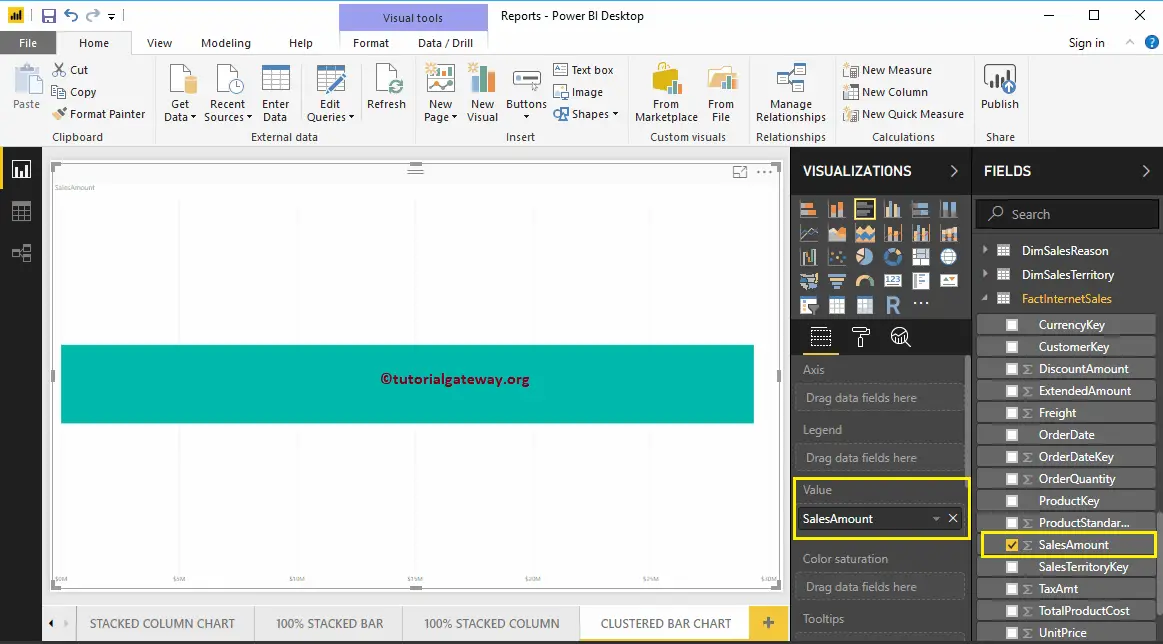
Next, let me add the English Country Region Name to Axis section to create a Bar chart. This Chart shows the Sales Amount by English Country Region Name.
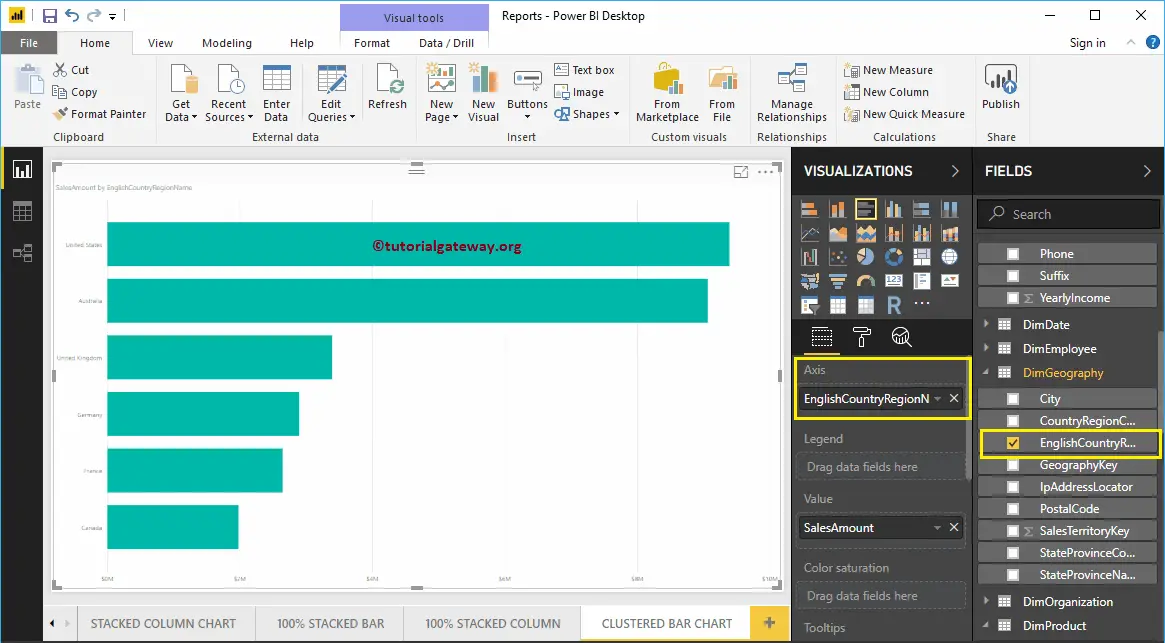
Next, add Color from DimProduct table to the Legend section.
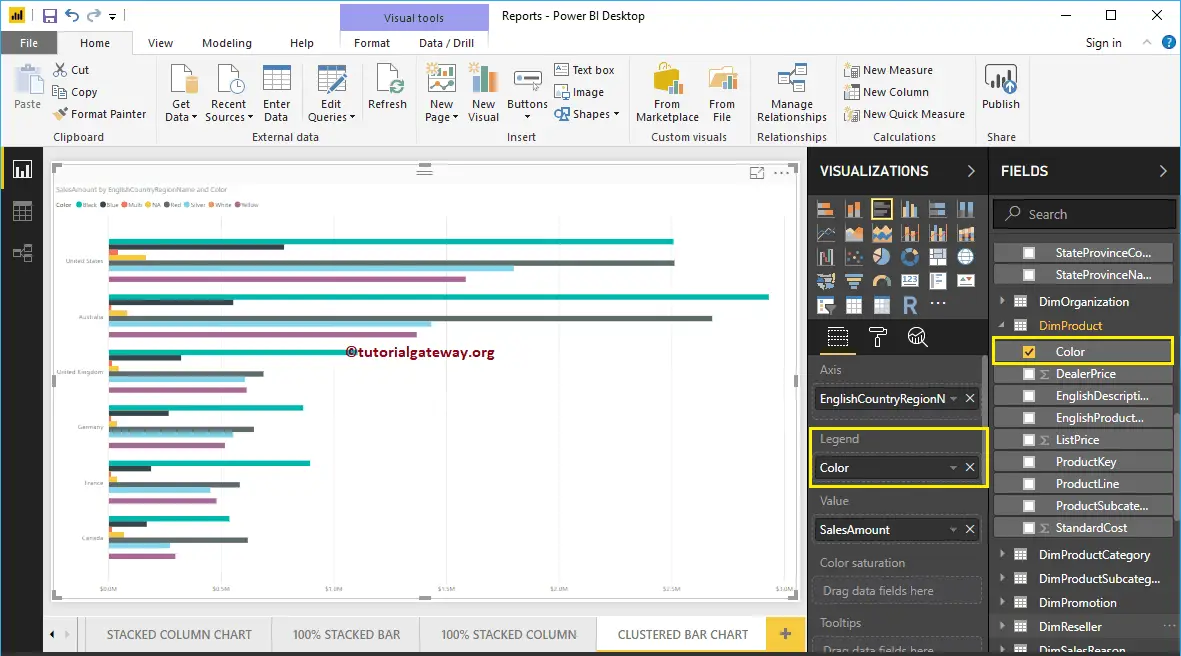
Create a Clustered Bar Chart Approach 2
To create a Clustered Bar Chart in Power BI, first Drag and Drop the Sales Amount from Fields section to Canvas region. It automatically creates a Column Chart.
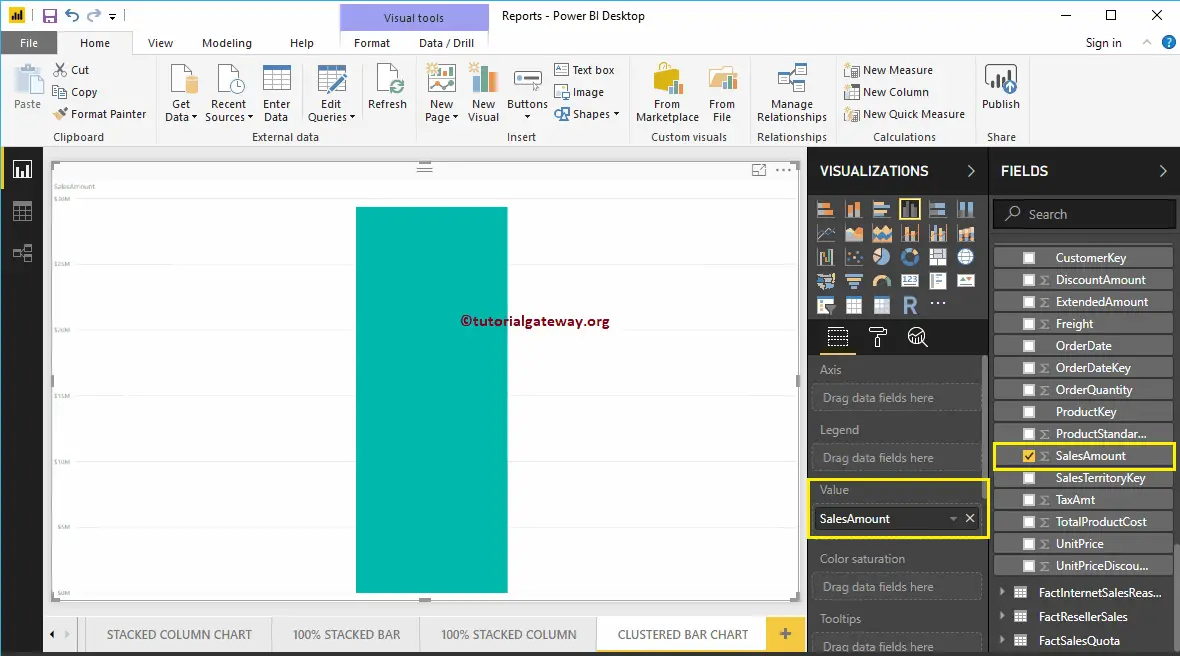
Next, let me add the English Country Region Name to the Axis section. Next, click on the Clustered Bar Chart under the Visualization section will convert the Column Chart into Clustered Bar Chart
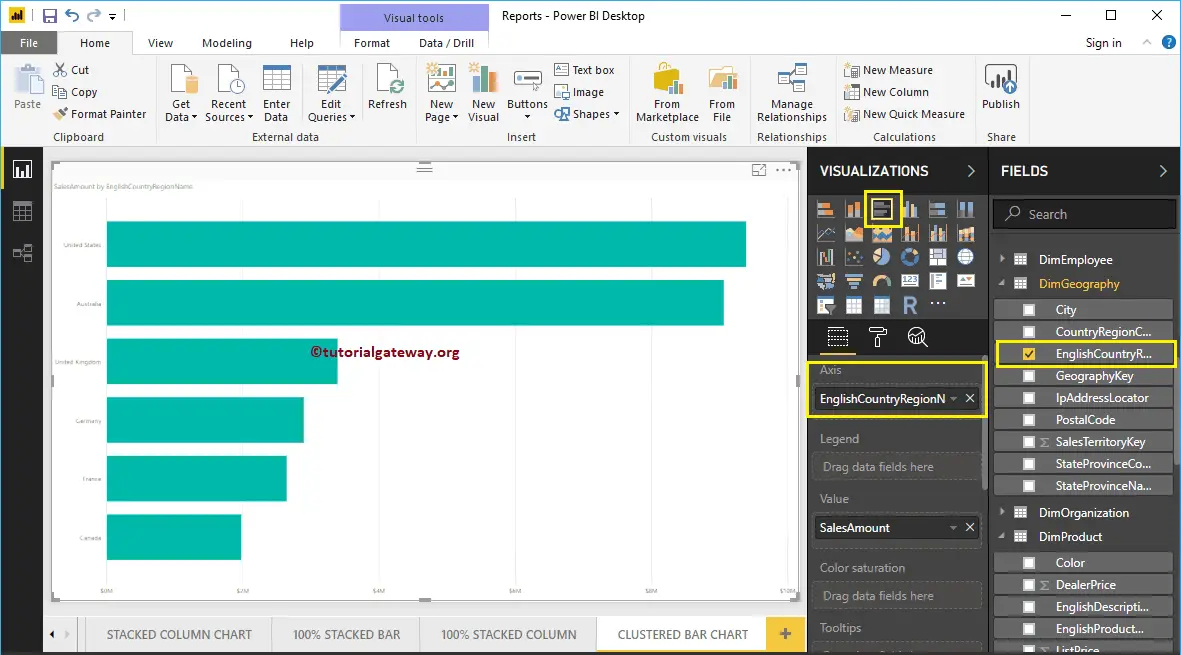
Let me add Color to Legend section to create a Clustered Bar chart that shows Sales Amount by Country Name and Color.
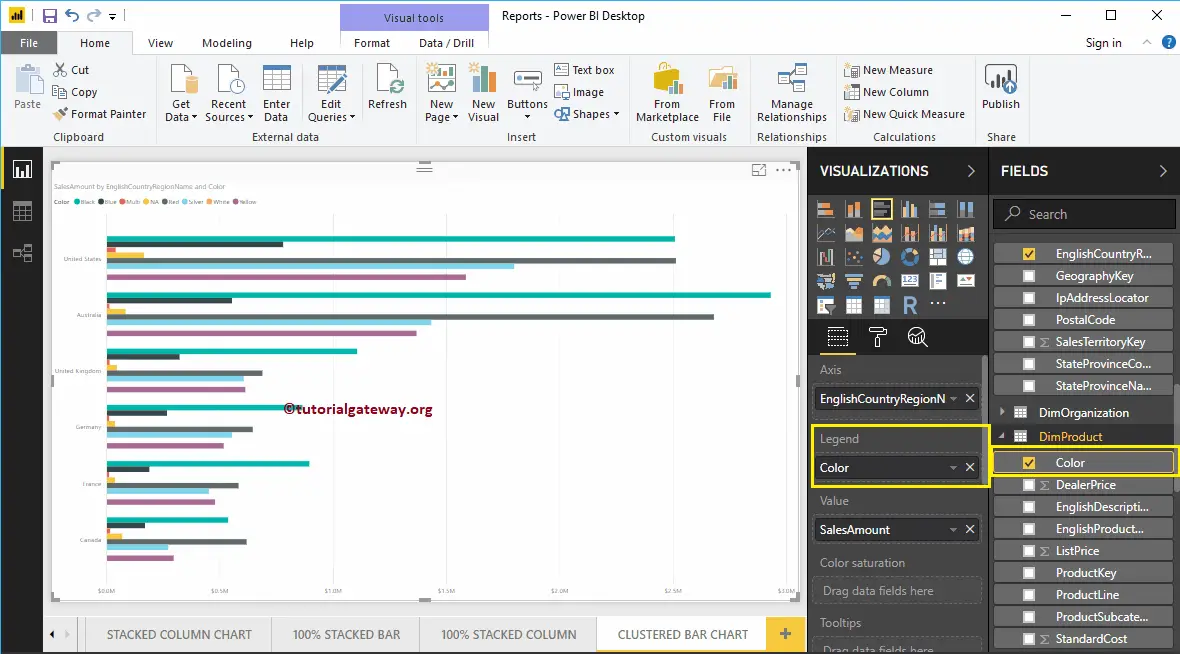
Hover over any horizontal bar shows the Tool-tip of Country Name, Product Color, and its Sales Amount
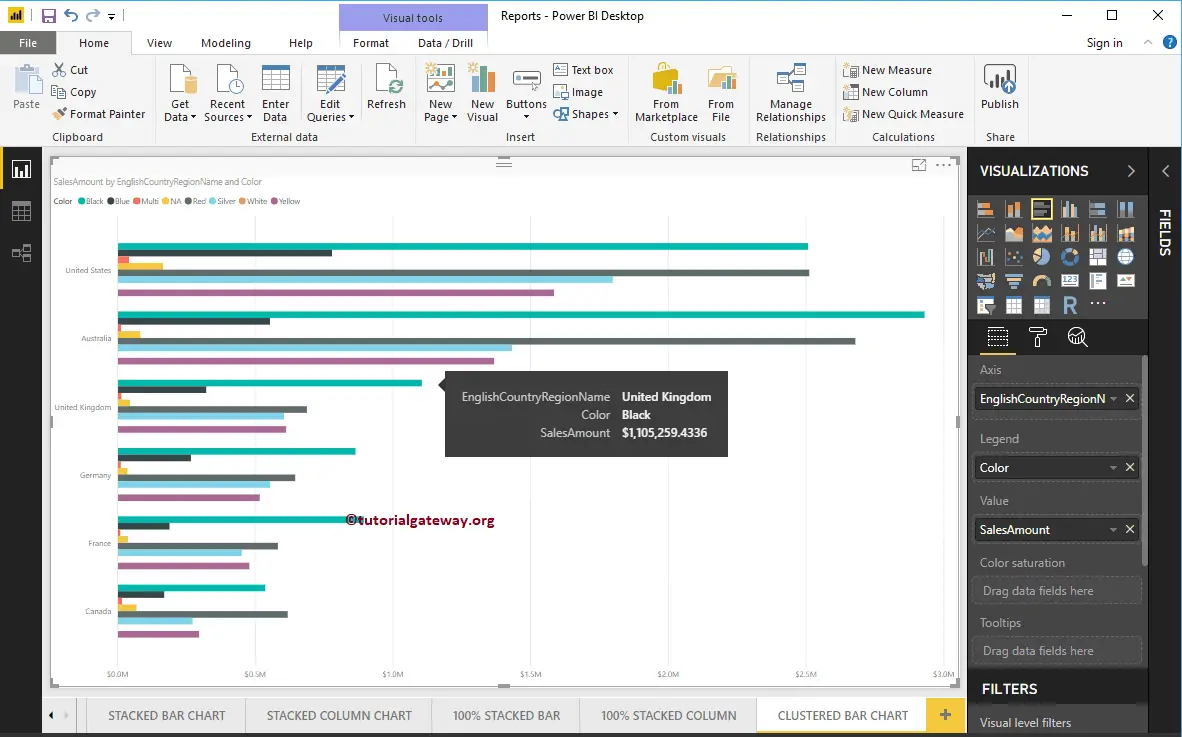
Let me do some quick formatting to this Power BI Clustered Bar Chart
NOTE: Formatting options for both Bar charts and Clustered Bar charts are the same. So, I suggest you refer to the Format Bar Chart article to understand the steps involved in formatting the Clustered Bars.
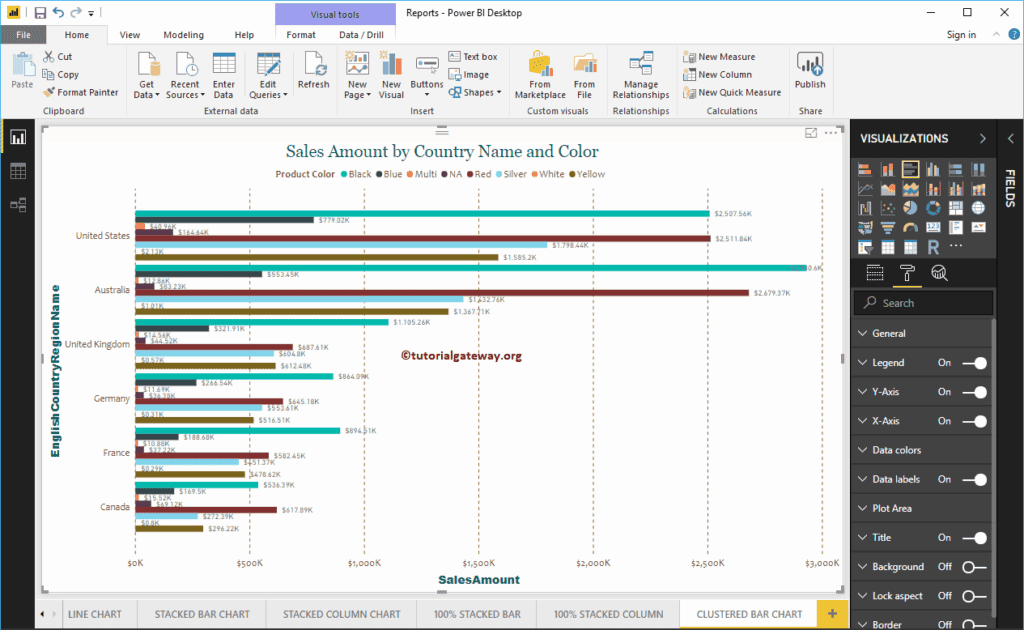
How to Format Bar Chart in Power BI with an example?. Formatting Power BI Bar Chart includes changing the Horizontal Bar Colors, Title text, Title position, Data labels, Axis Details, and background Colors, etc.
To demonstrate these Power BI Bar Chart formatting options, we are going to use the Bar Chart that we created earlier. Please refer to the Power BI Bar Chart article to understand the steps involved in creating a Power BI Bar chart.
How to Format Bar Chart in Power BI
Please click on the Format button to see the list of formatting options that are available for this Bar Chart.
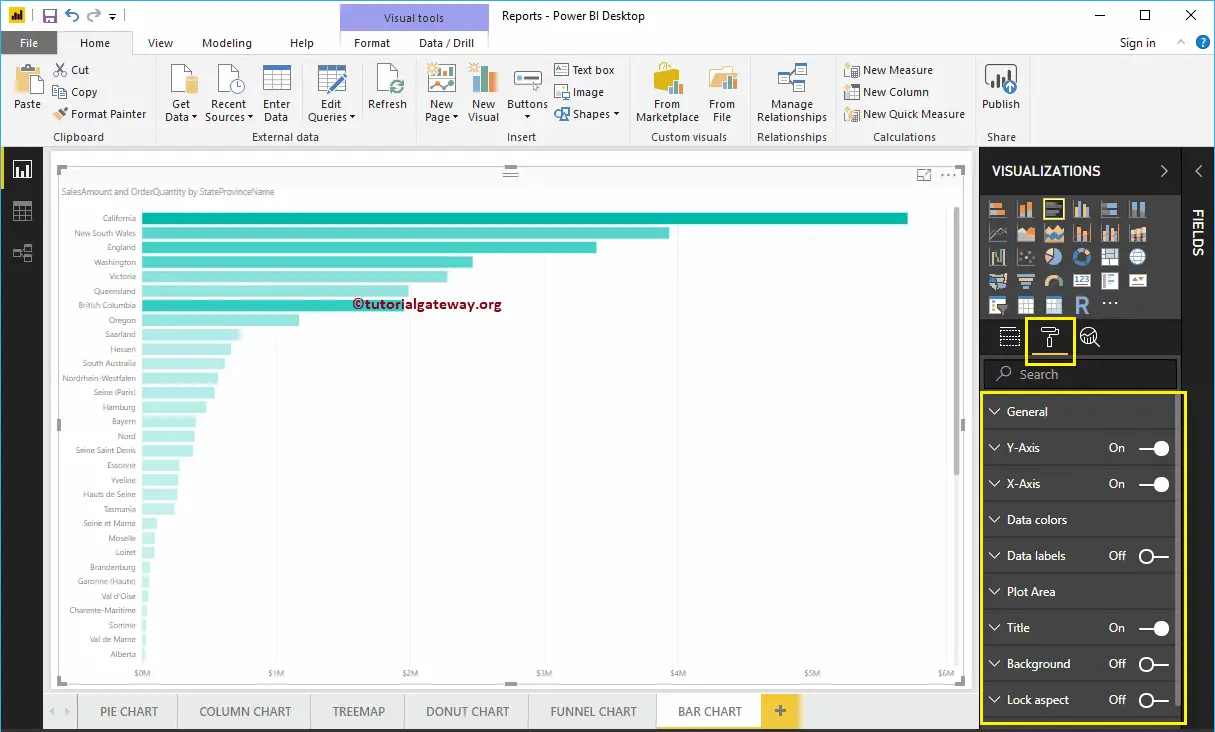
Format Bar Chart in Power BI General Section
Use this General Section to Change the X, Y position, Width, and height of a Bar Chart
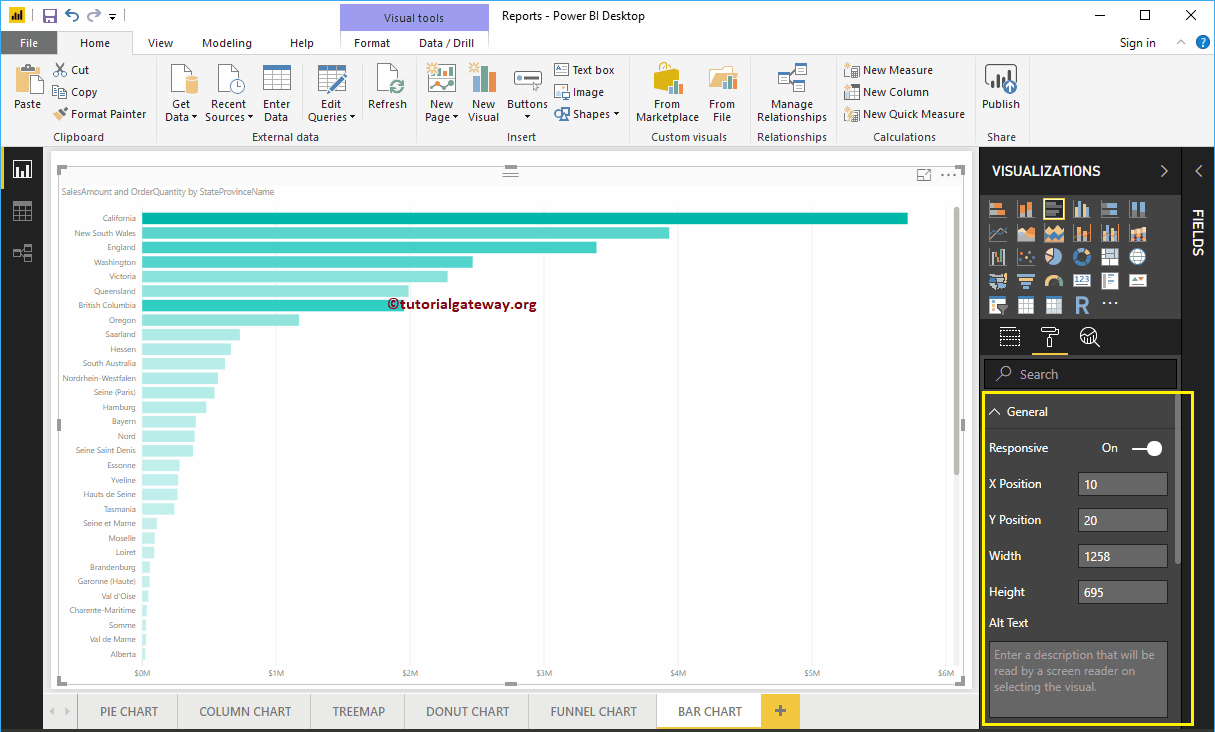
Format Y-Axis of a Power BI Bar Chart
The following are the list of options that are available for you to format the Vertical axis or Y-Axis.
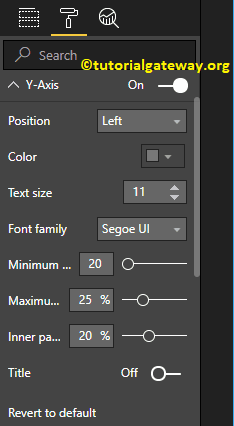
You can see from the screenshot below, we change the Y-Axis labels Color to Green, Text Size to 12, Font style to Cambria. You can use the Minimum category width, Maximum Size, and Inner Padding options to change the horizontal bar widths.
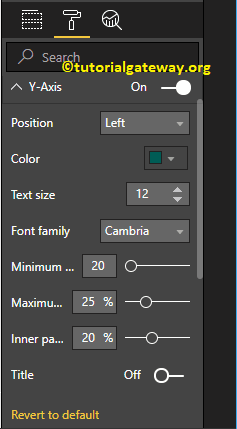
By default, the Y-Axis title set to Off, but you can enable it by toggling Title under the Y-Axis section to On. Let me change the Title Color to Brick Red, Title Text Size to 25, and Font style to Georgia.
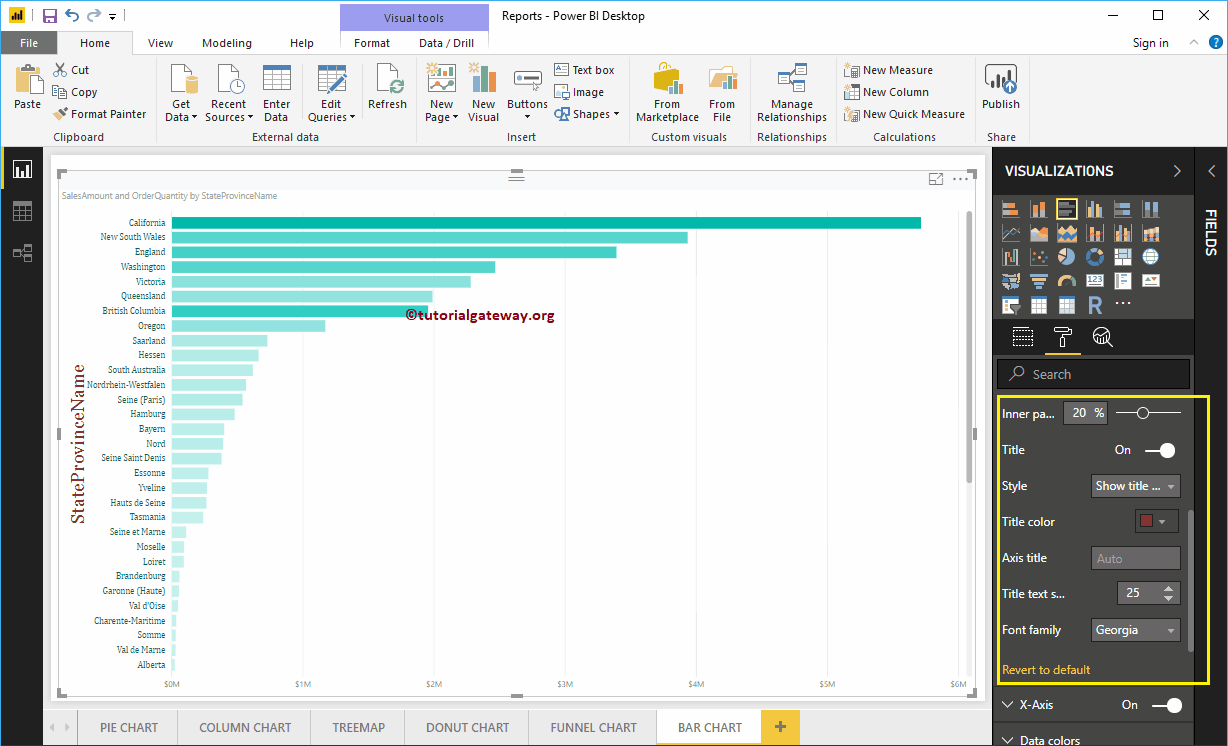
Format X-Axis of a Bar Chart in Power BI
Following are the list of options that are available for you to format the Horizontal axis or X-Axis
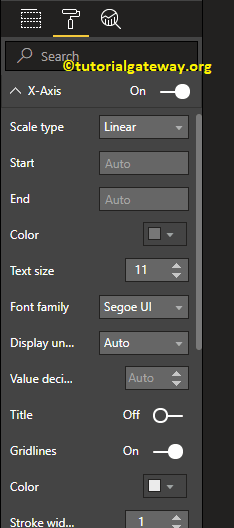
As you can see from the below screenshot, we change the Color to Green, Font style to Cambria, Text Size to 13, Display Units to Thousands (default is Auto).
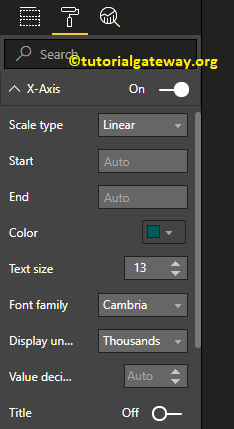
By default, the X-Axis title set to Off, but you can enable it by toggling Title to On. Let me change the Title Color to Brick Red, Font style to Georgia, and Font Size to 25.
By toggling the Bar chart Gridlines option from On to Off, you can disable the Grid lines.
- Color: You can change the Gridlines color.
- Stroke Width: Use this to change the Gridlines width. Here, we changed the width from default 1 to 2 strokes.
- Line Style: Choose the line style such as Solid, dotted, and dashed.
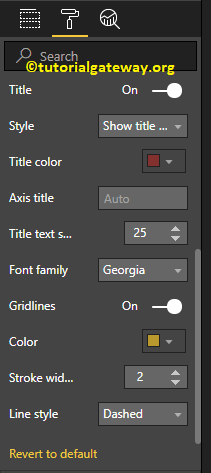
From the below screenshot, you can see the changes that we made to X-Axis.
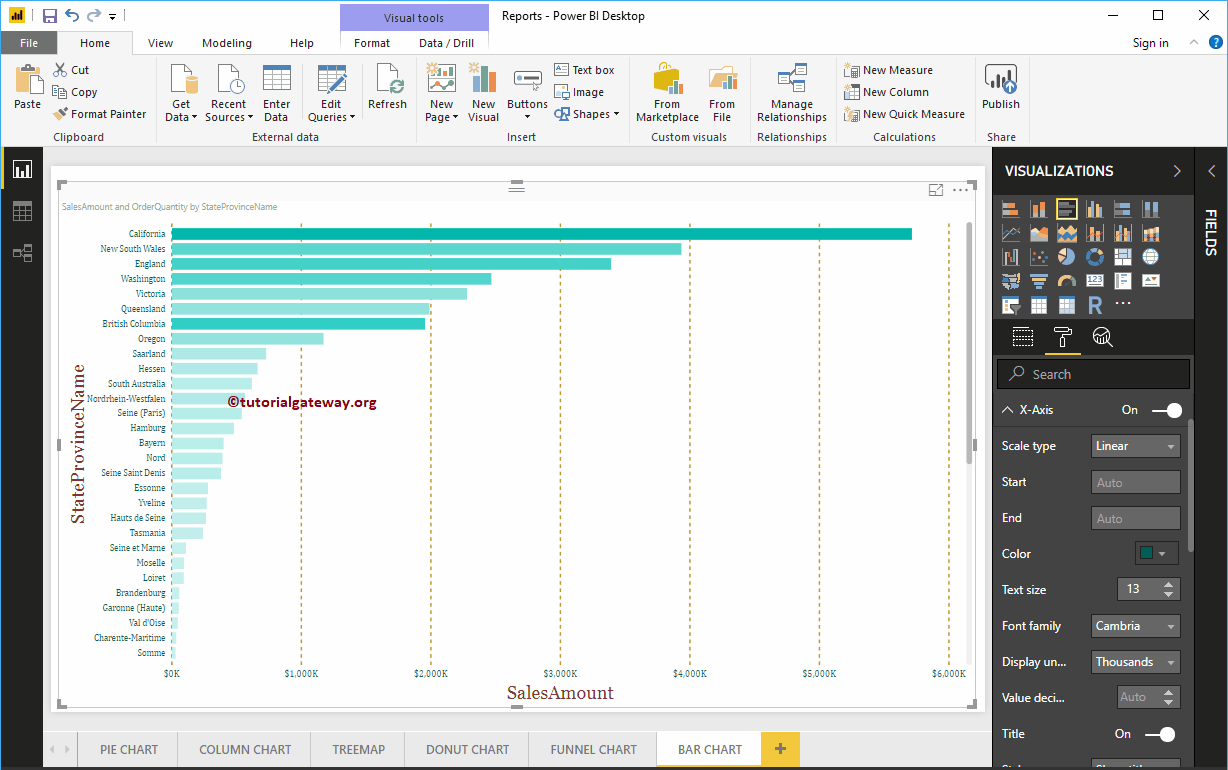
Format data Colors of a Bar Chart in Power BI
If you add any valid column to the Color Saturation field, then you can use this Diverging option to add colors to the Bar Chart. By default, it set to Off, but you can enable those Diverging options by toggling Off to On
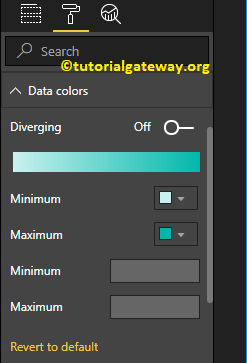
If you haven’t added any Filed under the Color Saturation section, then Diverging option under the Data Colors section replaced with the Default Color option like below
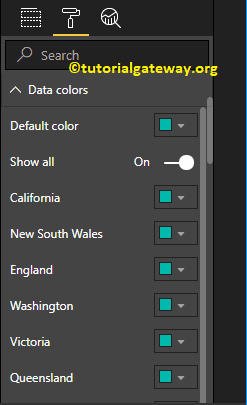
Let me add Minimum, Center, and Maximum color. Remember, you have an option to add the Minimum, Center, and Maximum values as well.
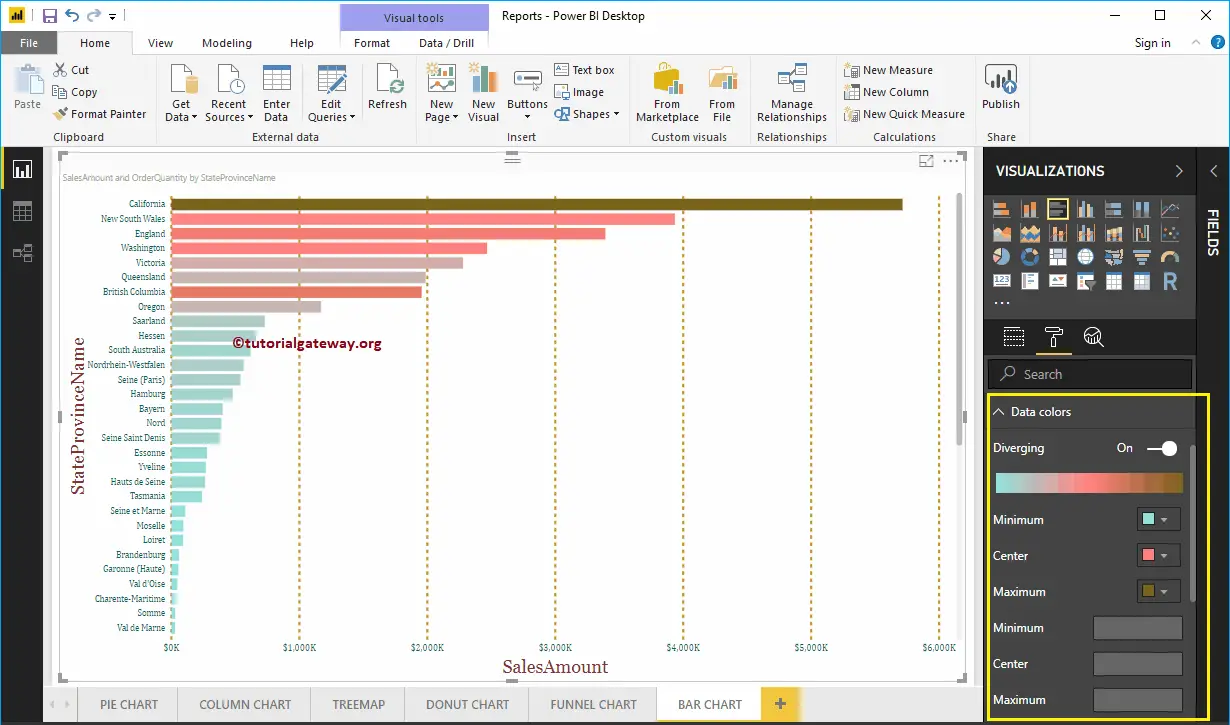
Enable Data Labels for Power BI Bar Chart
Bar Chart Data Labels display information about each individual horizontal bar. In this case, it displays the Sales Amount of each bar. To enable or format Power BI bar chart data labels, please toggle Data labels option to On.
Let me change the Color to Green, Display Units from Auto to Thousands, Font family to DIN, Text Size to 10, and Background color to Black with 90% transparency
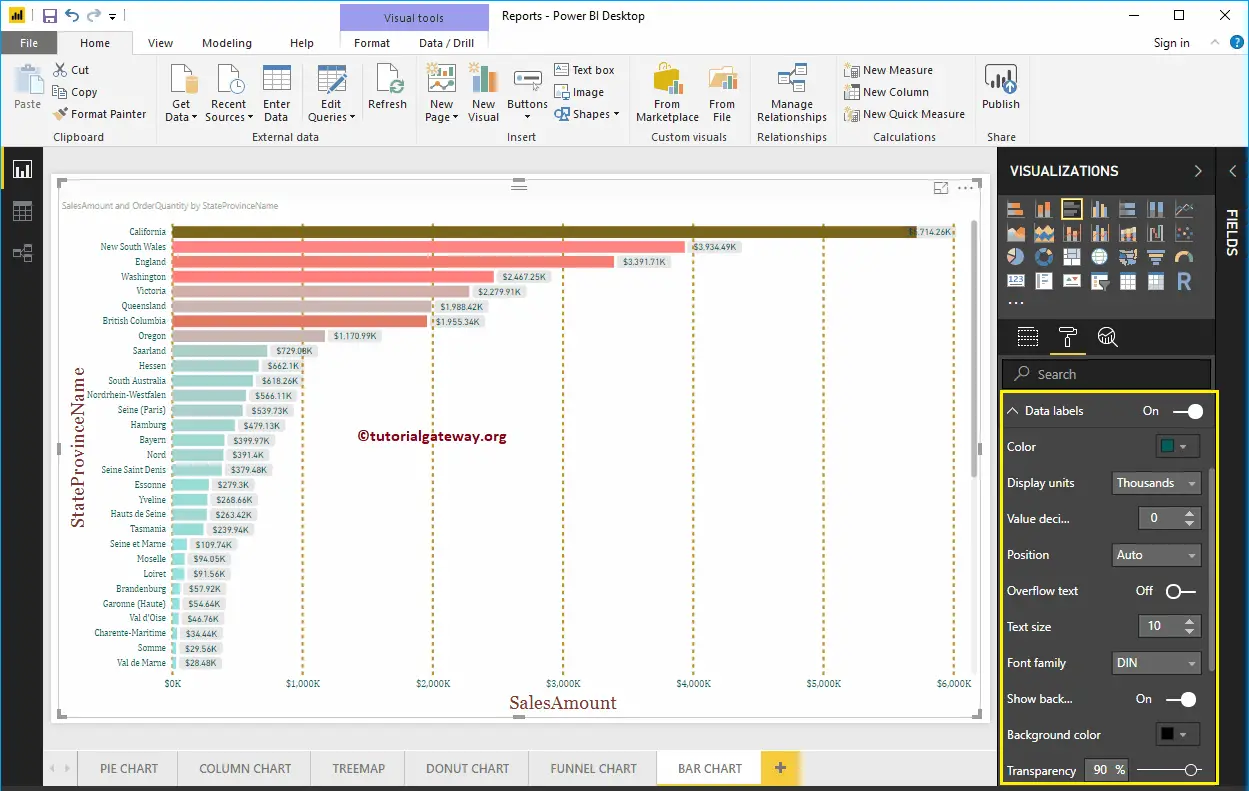
Format Bar Chart in Power BI Plot Area
You can add Images as the Background of a Bar Chart using this Plot Area section. For the demonstration purpose, we added one image as the Plot Area Background.
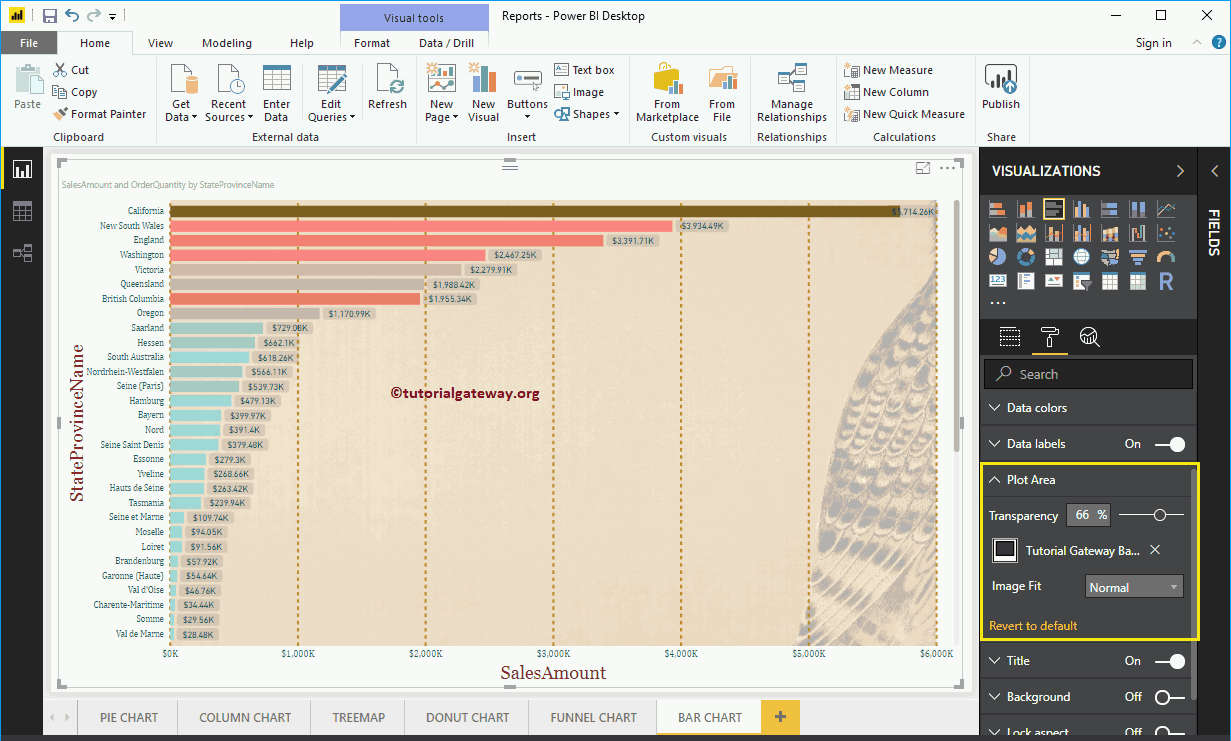
Format Bar Chart in Power BI Title
By toggling the Title option from On to Off, you can disable the Bar Chart title.
As you can see from the screenshot below, we change the Title Text to Sale Amount and Order Quantity by State province Name. We also changed the Font Color to Green, Font Family to Georgia, Font Size to 23, and Title Alignment to center. If you want, you can add the background color to the title as well.
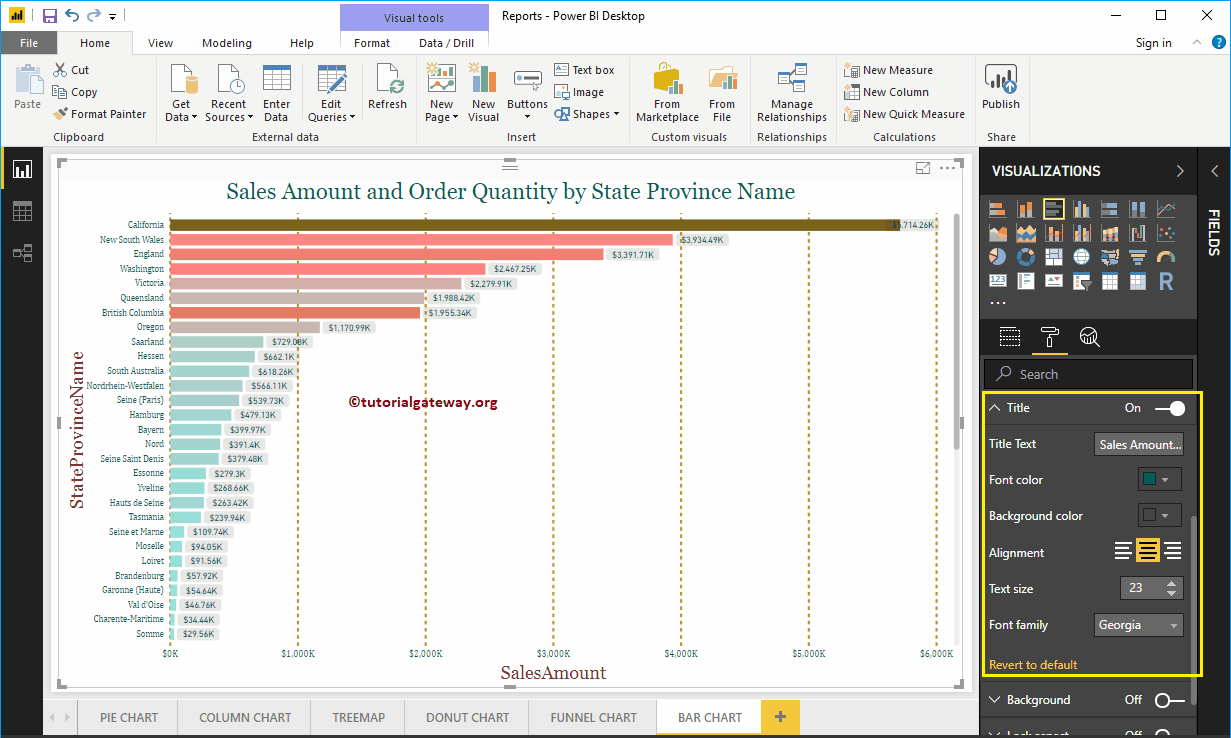
Format Background Color, and Border of a Bar Chart in Power BI
You can add the Background color to a Bar Chart by toggling Background option to On. And, you can add Borders to a Bar Chart by toggling the Border option from Off to On.
